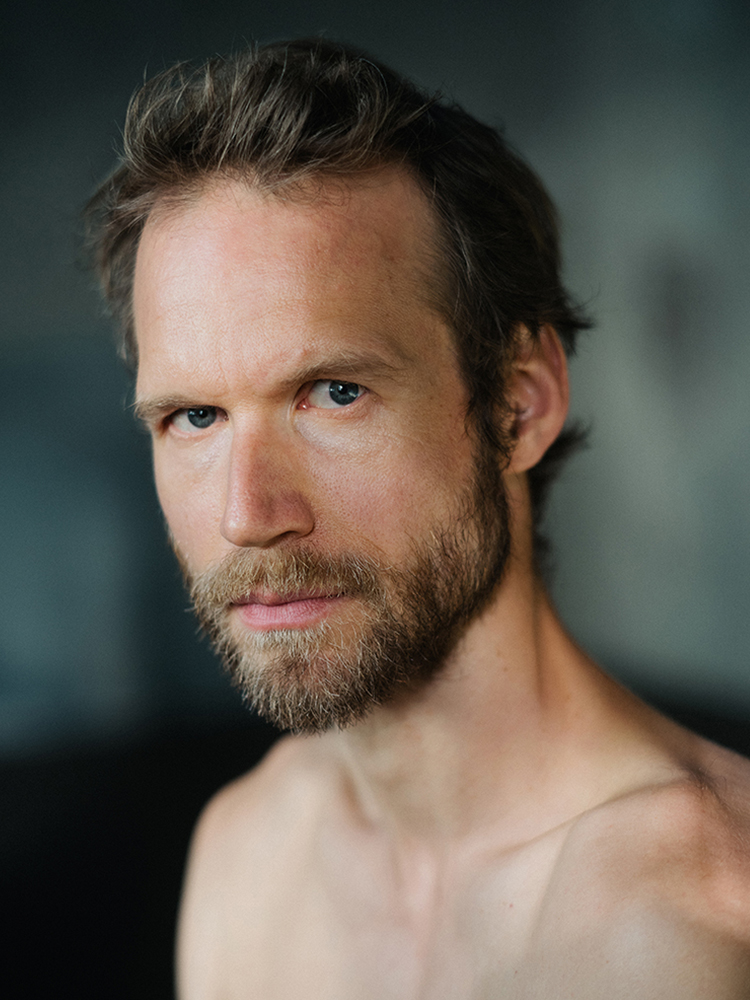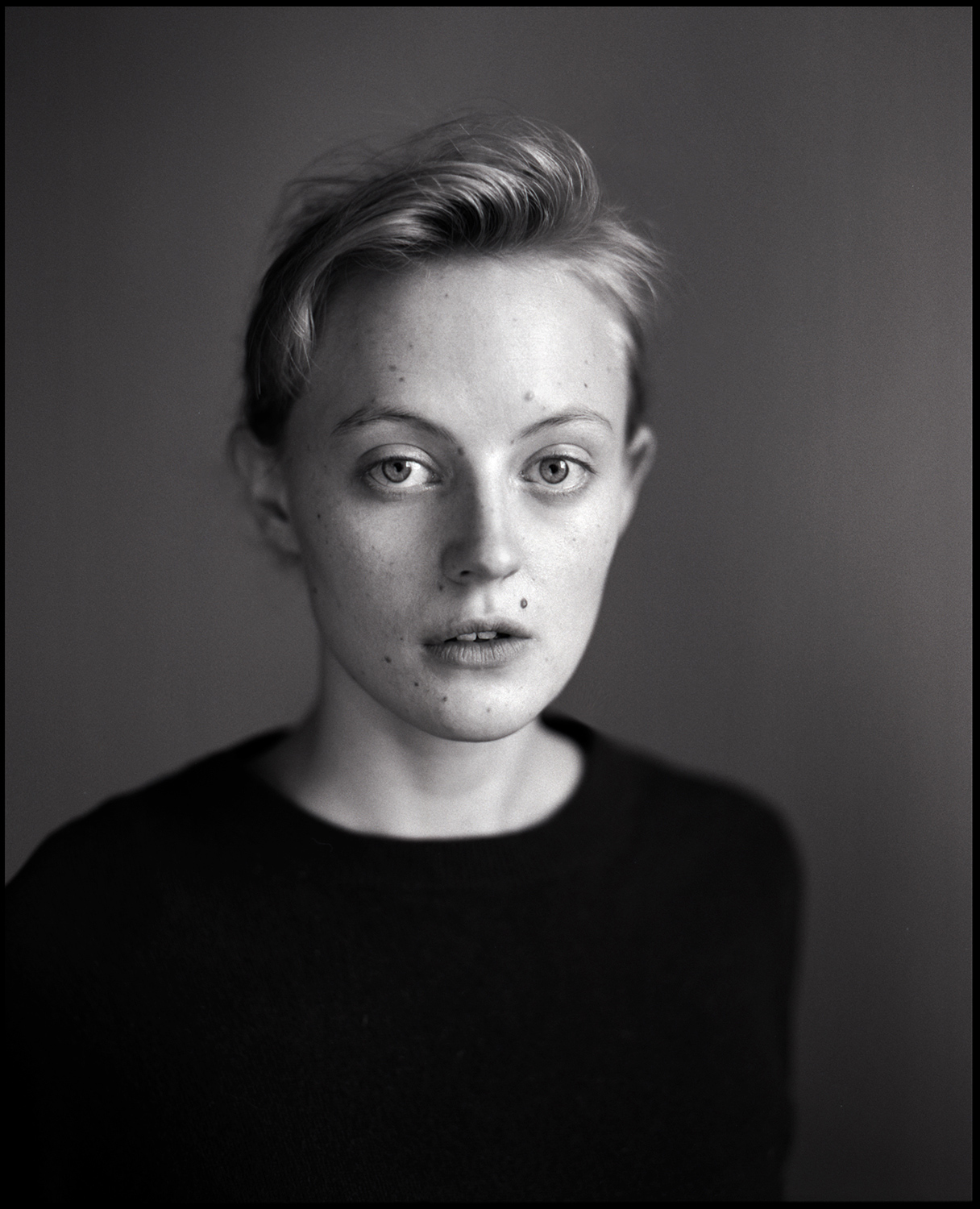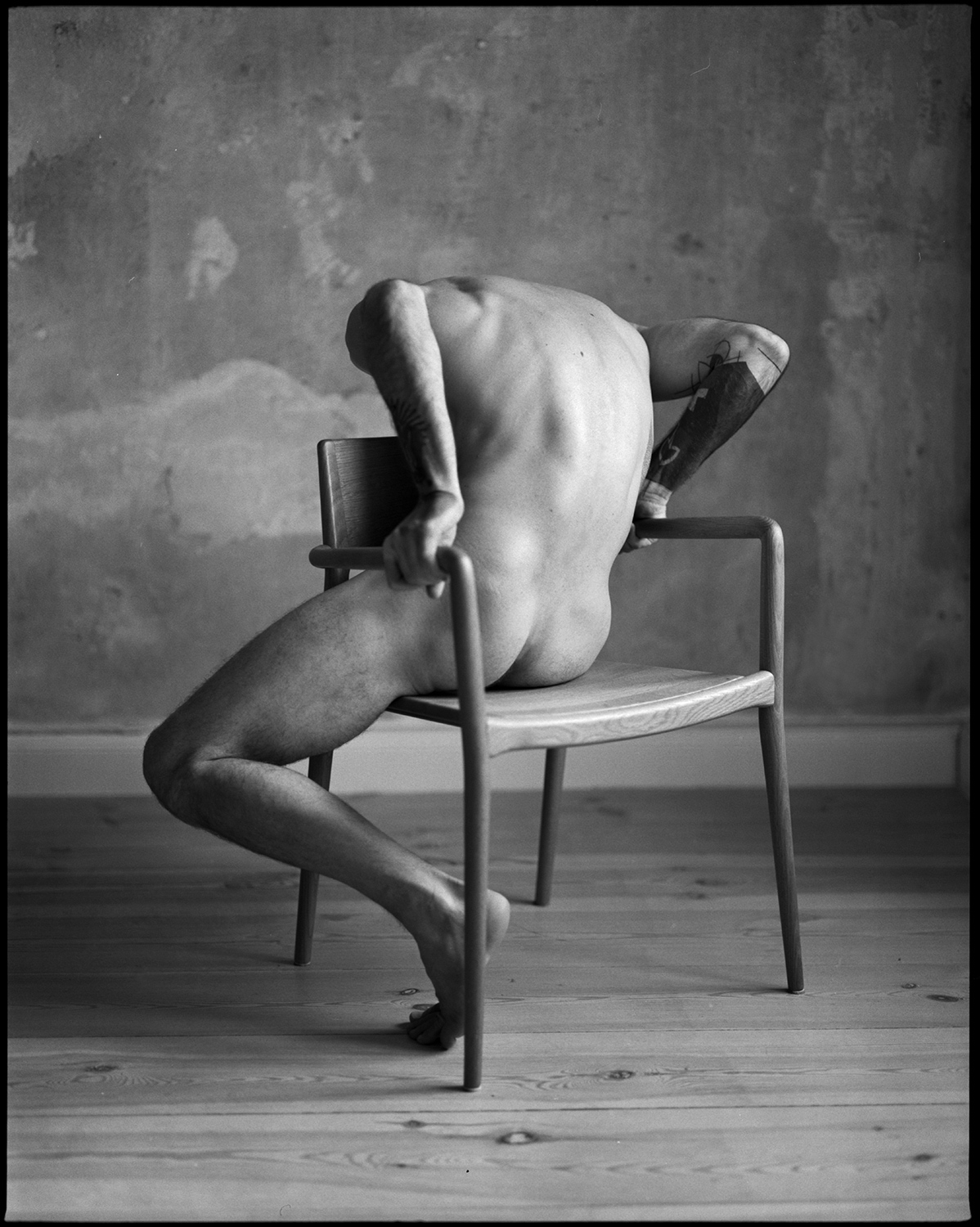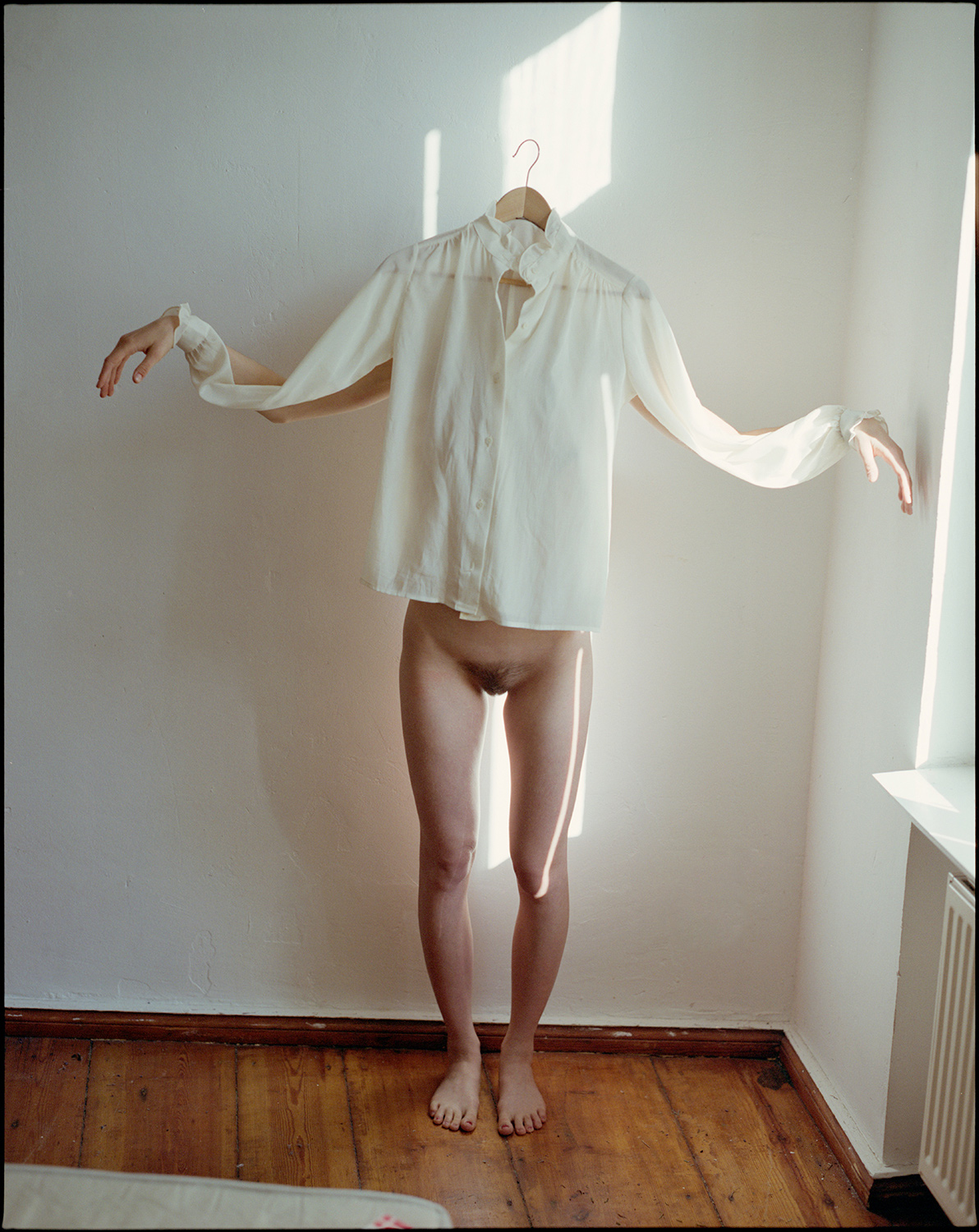
In conversation with
Hannes Caspar
Berlin, Germany
Hi Hannes, please introduce yourself.
A long time ago I was a web designer, at a time when everyone needed a website but didn’t know how to make one. However, I got increasingly bored with the job and went out with a cheap digital camera, always looking for shapes and colours. It could be screws or boards on building sites, but also interesting buildings. After a while, however, I got bored with that too, because emotionally these motifs didn’t mean anything to me. I began to photograph friends and acquaintances, still with the digital camera.
At some point I saw in photo books how beautiful portraits taken in analogue look. I got a cheap Pentacon Six medium format camera and made my first analogue attempts with it. At some point I bought a Hasselblad 500cm and a Pentax 67. I’ve been working with the Pentax for 12 years, I love it! I taught myself everything, I used to think school days were terrible. So it was clear to me that I didn’t want to develop artistically in a school environment.
What does analog photography mean to you? What excites / fascinates you about it?
A very big relevance. I like that the image is much more narrative than a digital one. There is so much more magic and power in analogue photography. Nevertheless, digital cameras also have advantages over analogue, especially when you photograph people. The workflow is faster and you can “work out” moments when the analogue camera comes into play. At least that’s how it often is for me.
In your opinion, what are the advantages and disadvantages of analogue photography?
The advantage is that you work much more thoughtfully and get a narrative, more exciting image as a result. The disadvantage, of course, is that it is very expensive and the workflow is very sluggish and therefore misses exciting moments.
Do you concentrate on a certain topic in your work?
I earn my money with portraits. With nudes I feed my hunger for artistic expression. Sometimes both go hand in hand.
Are there (analogue) photographers who have influenced your aesthetic and approach?
Actually, primarily the classics: Peter Lindbergh, Helmut Newton, Richard Avedon, Diane Arbus and Vivien Maier. But also from more recent times: Ren Hang, Nadav Kander, Wayne Lawrence and many more. In the meantime, however, I rarely look at my books, I actually find inspiration in Instagram and, of course, in good conversations with exciting people.
Do you have certain cameras and films that you prefer to work with?
Yes! As already mentioned, my favourite camera is the Pentax 67 and in 35mm the Nikon f6.
Speaking of films: What does your workflow look like?
I shoot about 2-4 films per session. I then take them to the lab and have the negatives developed. Then I scan everything into my Epson V800 and edit the tonal values and colours a bit with Photoshop.
What advice would you have for other photographers who are reading this interview?
Think carefully about what you want to tell. And then pick out pictures that you would have liked to have taken yourself. Then find out what the technical requirements were. And work with absolute dedication and obsession to keep developing. Question your work regularly. Question the world and yourself over and over again. Don’t take yourselves too seriously. 🙂
If you publish your work on Instagram: curse or blessing?
The blessing is the many inspirations and contacts you find there. And that you can “test” your work and receive feedback. Do others feel similar to you? The curse is clearly that you have to censor in the nude sector and there is no real alternative platform. Since the number of users on Instagram has exploded and the algorithm has inevitably changed, it has unfortunately become very difficult to be seen at all. In addition, my account has a “shadow ban”, i.e. my account is only visible, for example, if you enter my complete Instagram name down to the last letter in the search mask: hannes_caspar.
Which 3 photo books can you recommend / should you definitely own?
“Das Meisterwerk der unbekannten Photographin” (Vivien Maier), „Untitled 116“ (Peter Lindbergh) and “Diane Arbus” (Diane Arbus).
Thank you so much for your time!
Favorites
Pentax 67, Nikon F6
Kodak Portra 400/800, Kodak Gold 200, Cinestill 400d, Ilford HP-5
Color






